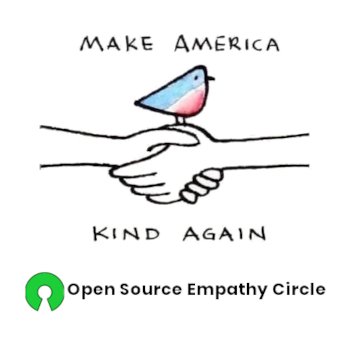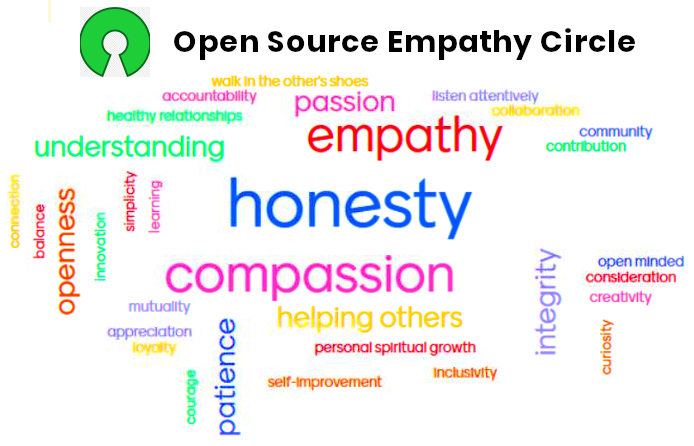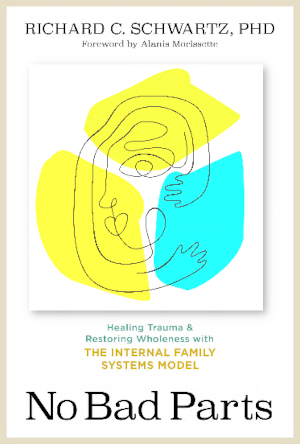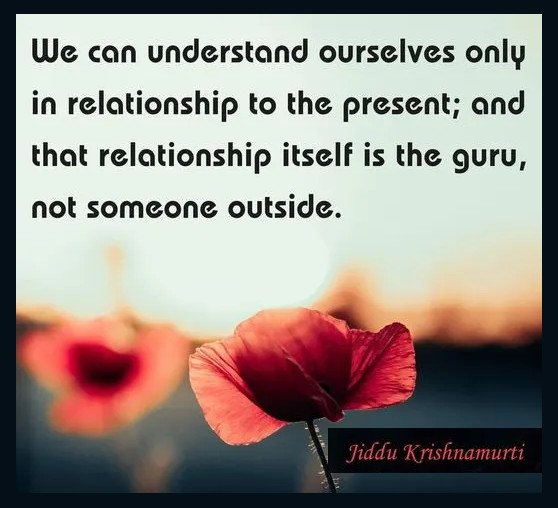Empathy Circle Schedule
Hey everyone 🙂 … I’m in Ormand by the Sea… Just north of Daytona Florida… And we still have no electricity… Not complaining, just saying 🙂…
Florida power and light company… estimates power to be restored by 10/17 at 11:45 PM… so I might not be able to attend zoom sessions until electricity and Internet are working again.
06:00 pm EST  |
Friday 6:00 pm November 22, 2024 Eastern_Time (ET) | |
IFS :: Tu,Thur, Fri, Sat @ 6 PM ET
| ||
| Add to Google Calendar | ||
09:00 am EST  |
Saturday 9:00 am November 23, 2024 Eastern_Time (ET) | |
ACIM – Saturday – 9 AM ET
| ||
| Add to Google Calendar | ||
01:00 pm EST  |
Saturday 1:00 pm November 23, 2024 Eastern_Time (ET) | |
Middle East Situation — Saturday at 1 PM ET
| ||
| Add to Google Calendar | ||
06:00 pm EST  |
Saturday 6:00 pm November 23, 2024 Eastern_Time (ET) | |
IFS :: Tu,Thur, Fri, Sat @ 6 PM ET
| ||
| Add to Google Calendar | ||
04:00 pm EST  |
Monday 4:00 pm November 25, 2024 Eastern_Time (ET) | |
Empathy Circle – Monday 4 PM ET — Red/Blue Concerns
| ||
| Add to Google Calendar | ||
06:00 pm EST  |
Monday 6:00 pm November 25, 2024 Eastern_Time (ET) | |
Empathy Circles – Mon-&-Wed
| ||
| Add to Google Calendar | ||
12:00 pm EST  |
Tuesday 12:00 pm November 26, 2024 Eastern_Time (ET) | |
IFS :: Transformation – Tuesday
| ||
| Add to Google Calendar | ||
03:00 pm EST  |
Tuesday 3:00 pm November 26, 2024 Eastern_Time (ET) | |
Empathy Circle – Tuesday at 3 PM :: PLEASE See DJ Zoom Link
| ||
| Add to Google Calendar | ||
06:00 pm EST  |
Tuesday 6:00 pm November 26, 2024 Eastern_Time (ET) | |
IFS :: Tu,Thur, Fri, Sat @ 6 PM ET
| ||
| Add to Google Calendar | ||
06:00 pm EST  |
Wednesday 6:00 pm November 27, 2024 Eastern_Time (ET) | |
Empathy Circles – Mon-&-Wed
| ||
| Add to Google Calendar | ||
06:00 pm EST  |
Thursday 6:00 pm November 28, 2024 Eastern_Time (ET) | |
Everyone is Invited to Share Thanks Giving 🌼
| ||
| Add to Google Calendar | ||
06:00 pm EST  |
Thursday 6:00 pm November 28, 2024 Eastern_Time (ET) | |
IFS :: Tu,Thur, Fri, Sat @ 6 PM ET
| ||
| Add to Google Calendar | ||
08:00 pm EST  |
Thursday 8:00 pm November 28, 2024 Eastern_Time (ET) | |
Guided Meditation – Thur
| ||
| Add to Google Calendar | ||
06:00 pm EST  |
Friday 6:00 pm November 29, 2024 Eastern_Time (ET) | |
IFS :: Tu,Thur, Fri, Sat @ 6 PM ET
| ||
| Add to Google Calendar | ||
09:00 am EST  |
Saturday 9:00 am November 30, 2024 Eastern_Time (ET) | |
ACIM – Saturday – 9 AM ET
| ||
| Add to Google Calendar | ||
01:00 pm EST  |
Saturday 1:00 pm November 30, 2024 Eastern_Time (ET) | |
Middle East Situation — Saturday at 1 PM ET
| ||
| Add to Google Calendar | ||
Empathy Circles and Open Source Empathy Café
Would you like to speak and feel fully heard? Would you like to connect to yourself and others more deeply? Do you want to work on developing your empathy skills?
An empathy circle is a simple but powerful way for people to connect through structured dialogue, speaking and active listening in small groups. It takes about 15 minutes to understand.
You don’t need any special skills or training to be involved.
It is primarily designed to offer an environment for active listening and creates a space where you can talk and feel heard to your satisfaction about a set topic or whatever is alive for you in the moment.
You will each have a role in the circle and take turns switching roles throughout the circle.
One role is the speaker who will speak to an active listener.
Everyone else takes the role of a silent listener during each turn and there is also a facilitator role who will also participate, keep time and help keep everyone in the process.
Link: Ground Rules / Guidelines (NYC–PTSD)
The two main criteria in practicing Marshall Rosenberg’s NVC:
1. Are you speaking and acting from your own experience?
aka: It’s not about “fixing” someone else.
2. Is your practice contributing to well-being? aka: Do No Harm (“Ahimsa”) When harm occurs accidentally, NVC can be used for repair work and healing.
________________________
QUESTION: “When should NVC not be applied for a reason of impaired physical or mental health?
ANSWER: ” I cannot think of a situation in which self-compassion, self-empathy, and self-connection is not appropriate. ~Marshall Rosenberg
Carl Rogers 3 core conditions:
Empathy, Congruence and Unconditional positive regard.
1) Empathic understanding: the counsellor trying to understand the client’s point of view.
2) Congruence: the counsellor being a genuine person.
3) Unconditional positive regard: the counsellor being non-judgmental.
[Listening]
… means entering the private perceptual world of the other and becoming thoroughly at home in it… It involves being sensitive, moment by moment, to the changing felt meanings which flow in this other person…. To be with another in this ways means that for the time being, you lay aside your own views and values in order to enter anothers world without prejudice… In some sense it means that you lay aside yourself …. ~Carl Rogers
Empathy is saying to someone:
“I’m trying to be a companion to you in your search and your exploration. I want to know, am I with you? Is this the way it seems to you? Is this the thing you’re trying to express? Is this the meaning it has for you?”
So in a sense I’m saying, “I’m walking with you step by step, and I want to make sure I am with you. Am I with you? So that’s a little bit of my understanding about empathy.”
~ Carl Rogers

Carl Rogers and Leta Hollingworth
…::”Empathy is the listener’s effort to hear the other person deeply, accurately, and non-judgmentally. Empathy involves skillful reflective listening that clarifies and amplifies the person’s own experiencing and meaning, without imposing the listener’s own material.’ ~ Carl Rogers (1902–1987)https://www.facebook.com/the.holistic.psychologist/posts/pfbid02p1hT3ae8mpmmpCXNuKsSmHY8Qsreb4RjT8Ez2VtAo6BPFYPixibPDW7nNEhxec7cl
Feelings
Big Hint – Watch out for “non-feeling” words…
It is important to choose words that really are feelings. That’s the reason for the list. If you use words like “abandoned” or “misled” or “shunned” we can prevent ourselves from getting to the “REAL” feelings. These “non-feeling” words are more like accusations or judgments than feelings. SOURCE: https://www.nycnvc.org/feelings
Guidelines:
“Trauma is when your reality is neither seen nor acknowledged”
~Bessel van der Kolk
To us, post-traumatic stress is when the shame, isolation, and pain of past trauma are too intense for us to face and process. As a result, the past trauma ‘lives’ in a sense, and continues to affect our health, relationships, jobs, bodies, and day-to-day lives.
Sharing our traumas in a supportive environment is one avenue for lessening that shame and isolation. Ideally, we can continue to lessen the impact of our past traumas on our present-day lives. Lifestyle changes can lengthen telomeres.
Group details:
Peer support groups for helping in recovering from traumatic experience(s).
All are welcome, and the safety of the group takes priority. Formal diagnosis of PTSD is not required. People with “non-traditional” causes of PTSD and/or “Complex PTSD” are also encouraged to join. The use of “I statements” is encouraged.
Please note that neither the organizers nor the other members are acting as “therapists”. This is not a substitute for therapy, and the group is intended to support one’s recovery, not serve as its sole venue. No one will force or push you to “dig deeper” into your story. The use of “I statements” is encouraged.
We ask that all members abide by these guidelines/code of conduct, linked below. Please note that these guidelines apply to meetups as well as to social media etiquette on the meetup websites:
https://empathymatters.org/now/carl-rogers#NYC-PTSD
“One must revisit the trauma but one need not relive it.”
Friends and visitors are welcome but their presence is subject to a majority of members present agreeing to it.
Through updating our outdated beliefs about reality we can alter the behaviors that derive from these old beliefs and achieve deep and lasting change. https://empathymatters.org/now/transformation/
Our current (online technology) :: website, “Zoom hosting”, and “Meetup hosting” costs are over $700 per year, covered personally by Larry. Gratitude coffee is always appreciated: 🙂 https://buymeacoffee.com/Cup.of.Empathy
Guidelines for meetings:
1) Please keep the group discussions confidential. Although our peer led groups are NOT therapy, occasionally participants might be inspired to share vulnerable topics that no one is granted permission to share outside the safety of the group, since that would constitute a violation of group trust.
Related: Empathic Listening and recording sessions, Carl Rogers
___________
2) Please do not offer others advice, unless solicited. Advice tends to be judgmental and patronizing. Sharing similar personal experiences, on the other hand, is powerful and highly encouraged.
___________
3) No one at the meeting is playing the role of a ‘therapist’, including organizers or members who may be in a related field. We are all equals, looking for support and community.
___________
4) If you are feeling triggered at any point during the meeting, please do not feel obligated to ask permission to step outside, get some water, take a walk… whatever it is you need to do.
We’ve all been triggered before. No one will judge you for taking care of yourself.
___________
(Empathy Circle Example) The speaker does have the option to “pass” their turn. by simply asking for a listener, stating they wish to pass, listening to the active listener’s reflection, then the active listener becomes the new speaker.
The “active listener” also has the option to “pass”, and the speaker simply requests another “listener” to complete the reflections. Again, no one in the group is playing the role of a therapist, and no one “prescribes” the speaker’s topic.
The speaker is reminded to pause after speaking one or two thoughts (and to refrain from becoming “overly graphic”) This guideline, to “pause frequently” is built into the Empathy Circle process in order to help ease the active listener and the speaker simultaneously.
If the speaker does not experience being heard, they simply repeat themselves, without projecting any criticism onto the listener. The speaker can easily re-assemble the essence of a complex thought into parts that are easily understood, and less likely to overwhelm the listener.
True empathy is all-inclusive with no intention to “trigger” anxiety, or “power over” an equal peer. True empathy is the antidote to a culture of domination.
___________
5) While sharing, we ask that people refrain from overly graphic descriptions of events in the past. While these are certainly relevant, we are wary of triggering other attendees. Safety comes first. Someone, likely an organizer, will let the speaker know if his or her share is moving too far in that direction.
___________
Current “trigger warning” research:
“Trigger Warning” critics argue that warnings both contribute to a culture of avoidance at odds with evidence-based treatment practices and instill fear about upcoming content. Recently, a body of psychological research has begun to investigate these claims empirically. We present the results of a meta-analysis of all empirical studies on the effects of these warnings. https://osf.io/qav9m/
Past research has indicated that trigger warnings are unhelpful in reducing anxiety. The results of this study are consistent with that conclusion. This study was the first to focus on how trigger warnings function in a sample of people who had survived Criterion A trauma as defined by the DSM–5 (APA, 2013). Trigger warnings did not reduce anxiety for this sample broadly. Trigger warnings also did not reduce anxiety among people who met a clinical cutoff for PTSD symptoms, reported a diagnosis of PTSD, or reported that the stimuli matched the content of their past trauma. Trigger warnings showed trivially small effects on response anxiety overall. When effects did emerge, they tended toward small increases in anxiety rather than decreases.
Bellet et al. (2018) previously found that trigger warnings increased individuals’ projections of their own vulnerability to future trauma as well as the vulnerability of others. Our results suggested substantial evidence that these effects did not replicate. Bellet et al. also reported that individuals who endorsed the belief that words are emotionally harmful showed greater anxiety in response to trigger warnings compared with individuals who did not endorse that belief. Again, we found substantial evidence that this effect did not replicate. One possibility is that these effects were unique to the trigger-warning-naïve (trauma-naïve), crowd-sourced, older sample used by Bellet et al. However, given that these effects originally had a small effect size and did not replicate in larger samples of college students (Bellet et al., 2020) or trauma survivors (present study), the original results may have been a false positive.
We found substantial evidence that giving trigger warnings to trauma survivors caused them to view trauma as more central to their life narrative. This effect is a reason for worry. Some trigger warnings explicitly suggest that trauma survivors are uniquely vulnerable (e.g., “ . . . especially in those with a history of trauma”). Even when trigger warnings mention content only, the implicit message that trauma survivors are vulnerable remains (Why else provide a warning?). These messages may reinforce the notion that trauma is invariably a watershed event that causes permanent psychological change. In reality, a majority of trauma survivors are resilient, experiencing little if any lasting psychological changes as a result of their experience (Bonanno, 2004; Bonanno & Mancini, 2008). Aggregated across various types of trauma, just 4% of potentially traumatic events result in PTSD (Liu et al., 2017).2 However, trauma survivors who view their traumatic experience as central to their life have elevated PTSD symptoms (Berntsen & Rubin, 2006; Brown et., 2010; Robinaugh & McNally, 2011). Trauma centrality prospectively predicts elevated PTSD symptoms, whereas the reverse is not true (Boals & Ruggero, 2016). Decreases in trauma centrality mediated therapy outcomes (Boals & Murrell, 2016). This suggests that increasing trauma centrality is directly countertherapeutic. In other words, trigger warnings may harm survivors by increasing trauma centrality.
We tested whether the severity of PTSD symptoms in our sample moderated any of our tested hypotheses. In most cases, we found either evidence for no moderation or ambiguous evidence. However, we did find substantial evidence that PTSD symptoms moderated the effect of trigger warnings on response anxiety. For individuals who had more severe PTSD, trigger warnings increased anxiety. This effect is ironic in the sense that trigger warnings may be most harmful for the individuals they were designed to protect. We found no evidence that individuals’ prior exposure to trigger warnings moderated any of the previous effects.
A limitation of past research was that trigger warnings were primarily tested among individuals who were trauma-naïve or in mixed samples. That is, the possibility remained that despite being unhelpful for most who view them, trigger warnings may have been helpful for trauma survivors or individuals with PTSD. In this study, we find no evidence supporting this possibility. Trigger warnings were not helpful for trauma survivors. For individuals who met a clinical cutoff for severity of PTSD symptoms, trigger warnings slightly increased anxiety. Trigger warnings were not helpful for individuals who self-reported a diagnosis of PTSD. Perhaps most convincingly, trigger warnings were not helpful even when they warned about content that closely matched survivors’ traumas. That is, when considering only the passages that participants reported as reminding them of past trauma, trigger warnings were still unhelpful.
Although the research base on trigger warnings has grown quickly, several constraints on generality regarding trigger warnings still remain. For example, experiments thus far have tested trigger warnings before short-term stimuli, such as literature passages, film clips, and photos. Studies have tested only a limited range of negative psychological outcomes (e.g., self-report anxiety, negative affect, intrusive memory). Our study provides important information about individuals who have suffered from trauma, many of whom met the clinical threshold for PTSD symptoms. However, it does not provide information about individuals diagnosed with PTSD via clinical interview. It is unclear whether our findings (especially concerning evidence of potential harms) would apply to extended classroom discussions or other situations of greater temporal duration. In addition, whether the potentially negative effects of trigger warnings found thus far have more than short-term adverse effects remains uncertain. Nevertheless, these potential constraints on generality do not imply that trigger warnings are helpful. Rather, they imply that potential moderators remain untested.
Public arguments regarding trigger warnings have been politically charged, complex, and data-poor. Recent research on trigger warnings can importantly inform or perhaps even settle some of these debates. The research suggests that trigger warnings are unhelpful for trauma survivors, college students, trauma-naïve individuals, and mixed groups of participants (Bellet et al., 2018, 2020; Bridgland et al., 2019; Sanson et al., 2019). Given this consistent conclusion, we find no evidence-based reason for educators, administrators, or clinicians to use trigger warnings.
Whether trigger warnings are explicitly harmful is less clear. We found evidence that trigger warnings increase the narrative centrality of trauma among survivors, which is countertherapeutic (Boals & Murrell, 2016). We also found that trigger warnings increase anxiety for those with more severe symptoms of PTSD. Although these effects were preregistered and found in a large sample, the sizes of the effects were small and have not yet been rigorously tested across multiple studies. However, such knowledge is unnecessary to adjudicate whether to use trigger warnings—if there is no good reason to deploy them in the first place, we need not require strong evidence of harm before abandoning them. Trigger warnings should serve as an important caution to both clinical and nonclinical professionals who use interventions aimed to improve well-being among trauma survivors. Such practices should be thoroughly vetted via appropriate scientific techniques before they are adopted. Using unvetted interventions is irresponsible to victims of trauma.
https://empathymatters.org/now#research
REF:
https://journals.sagepub.com/doi/10.1177/2167702620921341
The clinical notion of triggering dates back far as 1918, when psychologists tried to make sense of “war neurosis” in World War I, and later World War II, veterans. The term “post-traumatic stress disorder” came into use after the Vietnam War, but was not recognized as a diagnosable affliction until 1980. Then, psychologists started to work with clients to identify possible PTSD “triggers,” or a sensory input that somehow resembles the original trauma. But anticipating them is notoriously difficult. They assume disparate and unpredictable forms. An essay, or film, or other piece of media might trigger a person, as could a sound or a smell, a physical space, a specific object, or a person. https://bit.ly/3wNHxgf
“Triggers” prime the body for a physiological response of fight/flight or freeze, a response similar to the circumstances of the original distressing event. Some flashbacks are visual, as well as auditory and physical, so the person will see, hear, and feel the past abuse experience as if it was happening in the present. Sometimes the memories last a few seconds, sometimes minutes, and for one of my clients who had severe PTSD, flashbacks lasted more than an hour.
Trauma can have a long-term debilitating impact on our functioning. However, it is impossible to live a full and engaged life while simultaneously avoiding experiences that may potentially trigger flashbacks. https://psychologytoday.com/us/blog/breaking-the-silence/201910/post-traumatic-stress-disorder
https://www.andrew-kae.com/survivorresources
Psychology
Trigger warnings are ineffective for trauma survivors & those who meet the clinical cutoff for PTSD, and increase the degree to which survivors view their trauma as central to their identity (preregistered, n = 451)
REF:
RE: “Content warning” vs “trigger warning” … We probably understand the reason for using the softer term “content warning”, and current scientific research / literature, will always more accurately use the term “Trigger Warning”.
re: (“content”) … i think we might agree that at any present moment, any sensory input (content), can become a source of stimulation that becomes an opportunity to experience the present moment as awareness (observation), or as an interpretation (judgment) of that sensory input (content) as neutral, pleasant, or a potential threat to an individual’s physical or psychological egoic survival, potentially triggering an amygdala hijack, survival reflex mechanism, which is a “trigger like”, (“all or none law”) neurological reflex, resulting from a fear-based interpretation of the (content).
“Learning to ‘drop an anchor’ in the midst of an ‘emotional storm’ can help to hold us steady in the present moment whilst the storm buffets around. An anchor is anything that is a part of the present moment other than the storm itself. A simple grounding exercise can be: Notice 5 things you can see, 4 things that you can hear, 3 things that you can feel, 2 things that you can smell or taste, and end with noticing what you’re doing right now, in the present moment. https://www.greenpeace.org/international/story/54937/coping-with-climate-grief-advice-from-an-environmental-psychologist/
“It’s not psychological safety if people can only voice what you want to hear. The goal is not to be comfortable. It’s to create a climate where people can speak up without fear. Psychological safety begins with admitting our own mistakes and welcoming criticism from others.” ~Adam Grant, psychologist, #1 NYT bestselling author https://www.linkedin.com/in/adammgrant/
Creating a future you really want… starting at 1:07
Please Listen Carefully from minute 27 to minute 42 …. https://youtu.be/QnsUif-CzOg?t=1799
Listening for the needs, behind a thousand no’s…
https://www.youtube.com/watch?v=hovCrw-fD-g
Education, education, education, before it’s too late. https://empathymatters.org/now/education-before-its-too-late/
Getting well, well, well, educated 🙂 https://www.youtube.com/watch?v=fyvi8AmxQZk
The term “Trigger Warning” became well known in the late 1990s on feminist Internet message boards, where it referred to site-sponsored cautions to readers regarding graphic depictions of rape.
A short history of Trigger Warnings”:
https://psychlopaedia.org/society/republished/whats-the-difference-between-traumatic-fear-and-moral-anger-trigger-warnings-wont-tell-you/
..::” In self-empathy, you love and accept yourself, but not because of your strengths. You feel compassion for yourself in your weaknesses. You admit where you’ve been wounded and how you’ve hurt others. You embrace the hard truth that you have failed and lost. By facing the pain of your character defects and mistakes, you honor yourself.
~Kristin Neff, Ph.D
https://www.pointloma.edu/resources/counseling-psychology/how-empathy-can-change-your-life-career
Kristin Neff Interviewed by Edwin Rutsch https://www.youtube.com/watch?v=5hchn9KMRNM
Contrast: “Cancel Culture“:: The emergence of a new “cancel culture” where digital mobs police our speech, invade our rights, and even put our physical safety at risk. They argue that cancel culture has created a society ruled by online censorship and eroded our public discourse. Cancel Culture Is Toxic.
Contrast: “micromanagement” : “Micromanagement is generally considered to have a negative connotation, mainly because it shows a lack of freedom and trust. Micro-management refers to anyone in a leadership position who uses manipulation, intrusive observation, or exhaustive amounts of communication to control others. A micromanager is a person who probably has a poor self-image, so he or she doesn’t believe they deserve to be where they are, and so thinks the same about the people they supervise,” … “So the constant checking and looking over employees’ shoulders are really checks on their own ability to do the job.”
“It is not psychological safety if people can only voice what you want to hear. ~Adam Grant
Trigger Warnings Fail to Help and May Even Harm
New research suggests that trigger warnings have little or no benefit in cushioning the blow of potentially disturbing content and, in some cases, may make things worse.
Researchers discovered that trigger warnings seem to increase the extent to which people see trauma as central to their identity, which can worsen the impact of posttraumatic stress disorder (PTSD) in the long run.
https://www.psychologicalscience.org/news/releases/trigger-warnings-fail-to-help.html
“Federal law does not specifically address “Trigger Warnings”. Warnings are often reserved for common triggers such as images of violence. Opponents of trigger warnings claim trigger warnings promote censorship.
Trigger warnings are useful in some cases. But avoiding one’s triggers will not treat the underlying mental health concerns. If triggers interfere with someone’s daily life, the person may wish to see a therapist.
In therapy, people can process emotions concerning their pasts. Some may learn relaxation techniques to cope with panic attacks. Others may learn how to avoid unhealthy behaviors. With time and work, a person can face their triggers with much less distress.
Perhaps what is called for is a more neutral and humble stance. We could accept uncertainty about the psyches of individuals, disclaim the conceit of exerting control over triggers, and avoid confident assumptions about anyone’s trauma. That might help to move in a direction that attempts first to do no harm.
The results of around a dozen psychological studies, published between 2018 and 2021, are remarkably consistent, and they differ from conventional wisdom: they find that trigger warnings do not seem to lessen negative reactions to disturbing material in students, trauma survivors, or those diagnosed with P.T.S.D. Indeed, some studies suggest that the opposite may be true.
In other respects, trigger warnings seem to have less impact than their critics have feared. Some opponents of trigger warnings seem to suppose that they are a way for students to demand that they not encounter ideas that challenge their beliefs, particularly on social-justice issues. That opposition is part of broader worries about teachers “coddling” students, cultivating their fragility, or shielding them from discussions that might expand their minds.
https://www.newyorker.com/news/our-columnists/what-if-trigger-warnings-dont-work
“We found substantial evidence that giving trigger warnings to trauma survivors caused them to view trauma as more central to their life narrative. This effect is a reason for worry. Some trigger warnings explicitly suggest that trauma survivors are uniquely vulnerable (e.g., “especially in those with a history of trauma”). Even when trigger warnings mention content only, the implicit message that trauma survivors are vulnerable remains (Why else provide a warning?)
NYC “Content Warning” Poll and Feedback.
Please read options A-F, then click: POLL and Feedback (below)
Suggested “Content Warning” (A)
“To keep the group safe, we ask folk to include “content warnings” before and during shares and responses.
“So, if you plan to talk about a topic that could be a likely trigger to someone else, such as physical abuse or assault with a deadly weapon, you’d say, “Content warning, I’m going to talk about physical assault,” and leave a pause for folk to mute their audio or turn off their camera. We suggest singing the first line of a nursery rhyme such as “row, row, row your boat”.
We also ask folk not to go in too much detail, for example about what kind of weapon was used.”
“Depending on who is in attendance, “we” may also remind people that some topics which are not totally obvious may be triggers to people–such as discussing food.
Suggested “Content Warning” (B)
“We ask participants in the empathy circle to include content warnings before and during shares and responses.
“So, if you plan to talk about a topic that could be a likely trigger to someone else, you’d say, “Content warning, I’m going to talk about ______________ and leave a pause for folk to mute their audio or turn off their camera.
We also ask folk not to go into too much detail with possible trigger content.”
Suggested “Content Warning” (C)
“Anyone honestly sharing their feelings about traumatic experiences, may be perceived as triggering” to anyone listening to them. Please responsibly announce any “content warnings”, then pause 5 seconds… and refrain from any overly graphic details.
Speak for yourself, and intend no harm to self or others.
Suggested “Content Warning” (D)
” If you feel your topic may be a trigger for someone else, please voice a content warning.
Suggested “Content Warning” (E)
” We ask participants in the Empathy Circle to include Content Warnings before and during shares and to refrain from overly graphic details.”
Suggested “Content Warning” (F)
” There may be mentions of abuse. If you feel triggered at any point, please take a self-care break and return to the session as it may have moved on from the topic, or attend a different session. Kindly note that each participant is responsible for their own triggers. Please refrain from overly graphic details.”
https://empathymatters.org/now#POLL
________________________________
Please select feedback / poll link below
Potentially humorous 5-minute “trigger break” after all that thinking 🙂
Guided Meditations via Zoom
Guided Group Meditations
⚪ Guided meditation can be applied to assist with creative visualization, relieving stress, escaping the endless ramblings of the “egoic thoughts”, to experiencing your own true nature, providing relief from insomnia, anxiety, PTSD, chronic fatigue, chronic pain such as fibromyalgia, and so much more.
⚪ Yoga Nidra meditation returns you to your own inner Self, giving you a chance to experience that perfect peace and Self-born bliss that is beyond the mind and body. The benefits of experiencing that state while awake are truly beyond description; it re-energizes you on the deepest level possible. Encountering your own higher Self truly is the greatest form of Self-empowerment”. Sri. Devidas, — “Yoga Nidra”
⚪ Online meditations are scheduled here: https://empathymatters.org/now/contact/
⚪ Notes related to Adyashanti’s teachings: https://empathymatters.org/now/way-of-liberation-notes/
⚪ Introduction to NVC for your review: https://empathymatters.org/now/nvc-info/
================================
https://MiamiNetwork.org/meditation
=================================



